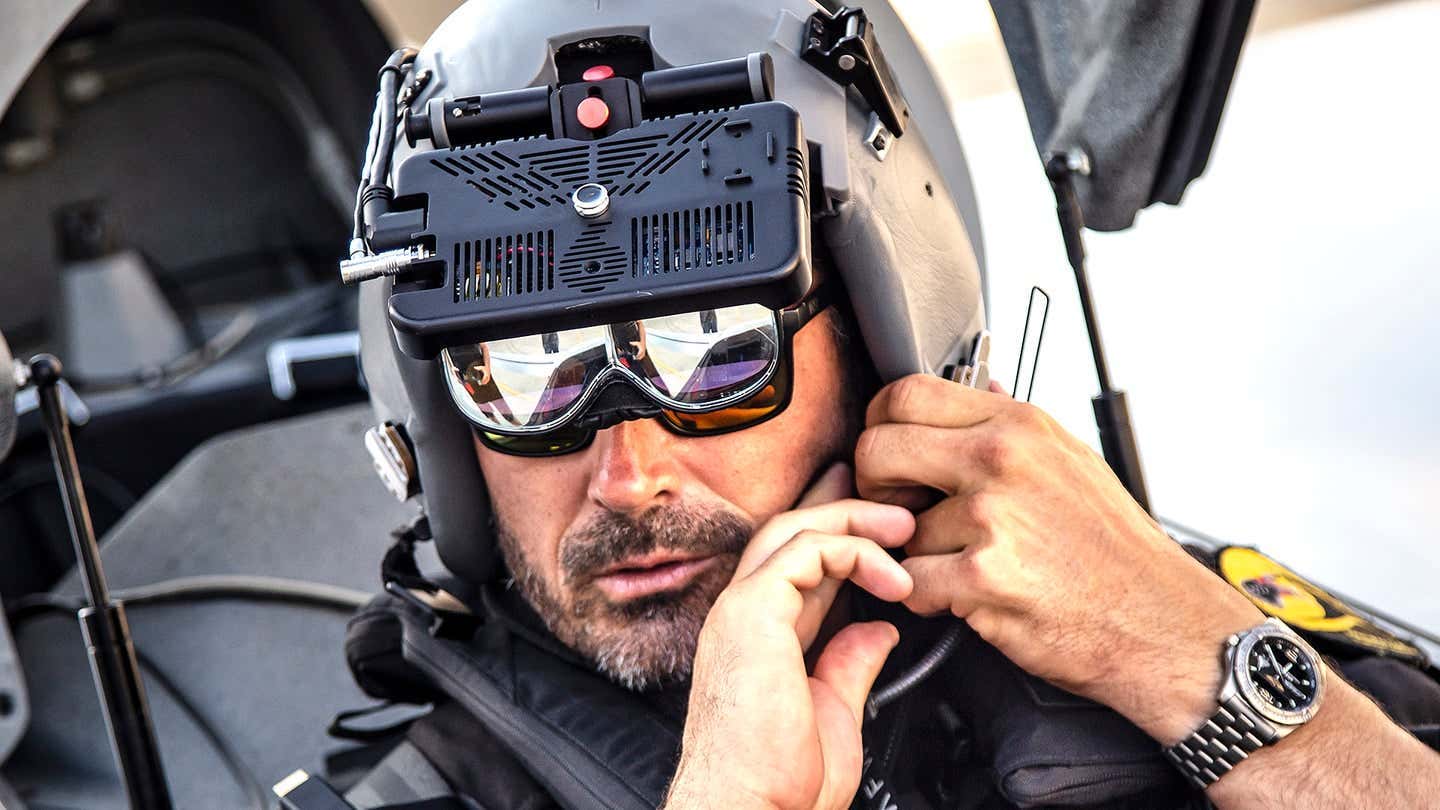The US Air Force is increasingly using new technologies to hone its warfighting skills. The service has recently performed a wargame in which pilots flew simulated missions involving the combined deployment of high-energy laser pods and two “future kinetic concepts”.
7 Times The Speed Of Sound, China Claims Breakthrough With ‘Hypersonic Gun’ That Can Shoot-Down Missiles, Fighter Jets
Flying the actual aircraft for various forms of combat is requires a huge amount of money and manpower. That’s why the US Air Force is looking into adopting Virtual Reality (VR), which could not only help cut costs but also provide advanced combat skills to trainee pilots.
The recent wargame was held at Kirtland Air Force Base between January 24 and 28, according to a press release from the Air Force Research Laboratory’s Munitions Directorate.
It was part of a concept called DEKE DEUCE, which explored synergies between directed energy and kinetic concepts in the future battlespace. The Air Force, however, has not disclosed details about “future kinetic concepts”.
The wargame underscores the USAF’s growing preference for employing these digital spaces for training as well as effort to establish virtual testing environments for weapon system development.

Pilots, weapon systems officers, and air combat managers participated in a series of “virtual vignettes” examining mission sets related to the combined use of directed energy (DE) and kinetic energy (KE) weapons, weaving together prior studies and analysis focused on an “airborne high energy laser pod and two future kinetic concepts”.
Edging Past F-22 Raptor – Here Is The Only ‘Super Fighter’ That Could Have Outgunned The World’s Most Powerful Jet
Rusty Coleman, an AFRL Munitions Directorate technical advisor, said that the exercise provided a once-in-a-lifetime opportunity for the directorate to demonstrate its kinetic weapons concepts to pilots and other personnel.
“It allowed us to see novel employment concepts that we could not have seen otherwise,” Coleman explained. “The pilots virtually flying the aircraft provided feedback beyond what we could have gotten from any other venue.”
The project brought together multiple defense research communities to study how “next-generation” weapons technology might perform together, according to Dr. Darl Lewis, an AFRL wargaming principal investigator.
“An urgent need exists to rapidly field and integrate viable next-generation weapons, both DE and KE, in response to increasing capabilities and aggressive intentions from our adversaries,” Lewis said.
Projects Under Development
The technology to evaluate in the simulated experiment was a high-energy laser pod and “future kinetic concepts”. However, the details on the latter are still unknown.
AFRL has been developing a Self-Protect High Energy Laser Demonstrator pod, or SHiELD, since 2015, although this has been described as a primarily defensive weapon to intercept incoming missiles.
The Airborne High Energy Laser, or AHEL, is another US Air Force laser weapon technology that will be deployed aboard an AC-130J. Several more airborne laser systems are in the works across the Department of Defense, including programs outside of the Air Force. However, none have reached operational status yet.

It’s unclear whether the DEKE DEUCE experiment’s virtual laser pod is linked to any of these ongoing projects. Moreover, the Office of Naval Research was involved in the DEKE DEUCE trial, and it has been collaborating heavily in the run-up to putting their Elektra battle management model on the table alongside AFRL’s.
ELEKTRA appears to be a networked system with artificial intelligence to help human operators make quicker targeting and engagement decisions. It can also ensure that the appropriate weapons are used in battles to achieve the best results against specific targets.
Comparable to the DEKE DEUCE wargame, the AFRL has already evaluated the use of novel virtual scenarios for new systems and capabilities. In 2021, AFRL partnered with the Johns Hopkins Applied Physics Laboratory to create “the Colosseum”, a virtual environment that provides a “digital representation of the real world” as well as a “live, virtual, constructive capability for weapons research and development”.
Involvement Of Private Sector
Virtual reality is becoming more popular in the Air Force as a way to supplement training. The private sector, in addition to government entities, is also involved in this emerging arena. CBS News reported in 2020 that one of the private sector projects, Red 6, a new firm run by veteran fighter pilot Dan Robinson, is developing augmented reality (AR) technology for fighter pilot training.
The EurAsian Times had previously reported that the US Air Force (USAF) has been experimenting with integrating high-tech solutions provided by ‘Red 6’ for its pilot training routine.

The business has designed the Airborne Tactical Augmented Reality System (ATARS), which allows Augmented Reality (AR) to operate in high-speed, dynamic situations. This technique enables virtual and constructive elements of air combat training to be presented in real-time in the actual environment.
Within-visible-range (WVR) maneuvering against simulated dangers is possible with the technology.
Every squadron can have a specialized “Red Air ” training resource from ATARS. They have the access to an endless amount of virtual training versus hyperrealist projections of near-peer opponents.
It saves time, money, and can accommodate more squadrons than traditional training methods. The US Air Force has been proactively increasing its endeavors to develop and deploy new technologies, keeping the future threat in mind.
- Contact the author at ashishmichel@gmail.com
- Follow EurAsian Times on Google News




